Certain words often spring to mind when thinking of modern Scandinavian design: words like simple, clean and functional. Understood in this way, the style has always shared many characteristics with the broader modernist tradition.
But whereas the earlier modernism espoused by the Bauhaus could be rather harsh in its aesthetic, from its inception, Scandinavian design placed greater emphasis on naturalistic, earthy and human-centric forms, as well as a general focus on homeliness.
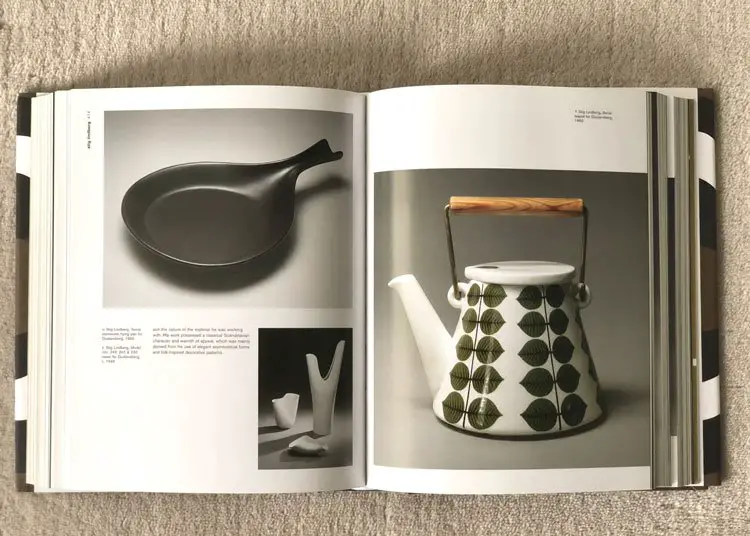
From left: Stig Lindberg, Terma stoneware frying pan for Gustavsberg, 1955 – Stig Lindberg Model nos vases for Gustavsberg, 1949 – Stig Lindberg Berså teapot for Gustavsberg, 1950. Via “Scandinavian Design” Taschen.
Yet there have also been distinct articulations of this philosophy within each of the four main Nordic countries. At least at the beginning of the mid-century period, Norwegian design culture was characterised by a can-do self-reliance and a focus on usefulness, due to the country being historically less prosperous than its neighbours. On the other hand, Swedish design has always been more influenced by a socialist ethos, and a sense of design’s social function.
Meanwhile, Finnish design manifests a particular preoccupation with nature’s raw beauty, arising from the country’s location in the harsh, yet dazzlingly beautiful edge of human habitability. Then, finally, there’s Danish design, summed-up brilliantly in the term hygge, a word roughly meant to describe the pursuit of a life lived in the moment, often in a cosy, homely atmosphere.
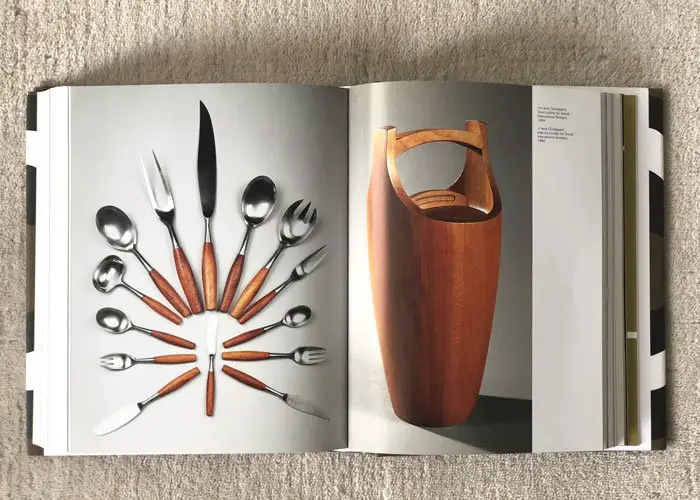
From left: Jens Quistgaard, Fjord cuttlery for Dansk International Designs, 1953 – Jens Quistgaard teak ice bucket for Dansk International Designs, 1960. Via “Scandinavian Design” Taschen
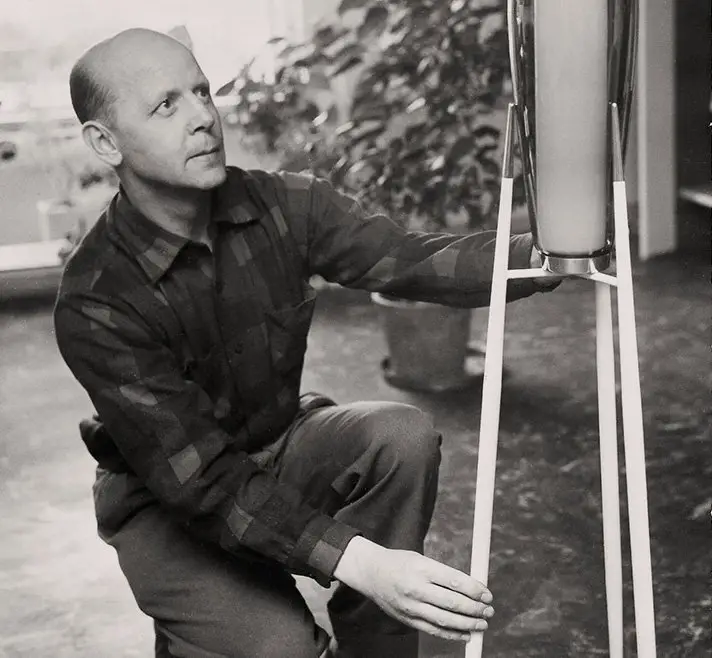
Svend Aage Holm Sørensen, via Warm Nordic site
This particular Danish flavour is really nicely captured in the work of a designer like Svend Aage Holm-Sørensen. Sørensen, who passed away in 2004, came from a background in ornamental metalwork. His designs combined a sense of functionality and playfulness with a real eye for generating a warm, elegant ambiance. Much of this comes from the influence of brutalist aesthetics, which led him to strip back his designs while allowing the essential function (illumination) to come to the fore.
His work continues to resonate in the present day through the efforts of Warm Nordic, who have secured the rights to re-issue some of the most iconic designs emerging from the Danish mid-century style.
Founded by Frantz Longhi, owner of the internationally recognised Kahler restaurants and an avid collector of mid-century furniture for decades, the company’s genesis is as honest as the Danish style itself, starting, as it did, from a clearly identifiable need.
It emerged through Longhi’s work furnishing the Kähler restaurants, where he would include a lot of Danish designs from the mid-century period. Persistent interest in the vintage furniture he had been selecting led him to contact the people who held the rights to the original designs—often the descendants of the original designers—in a bid to have them reproduced.
To take an example from Sørensen’s oeuvre, Warm Nordic have been reproducing his Opal Shade Lamp. This remarkable design combines a grooved metal shade and opal glass to generate a lovely warm glow (ideal for a hygge¬-oriented dining or kitchen space).
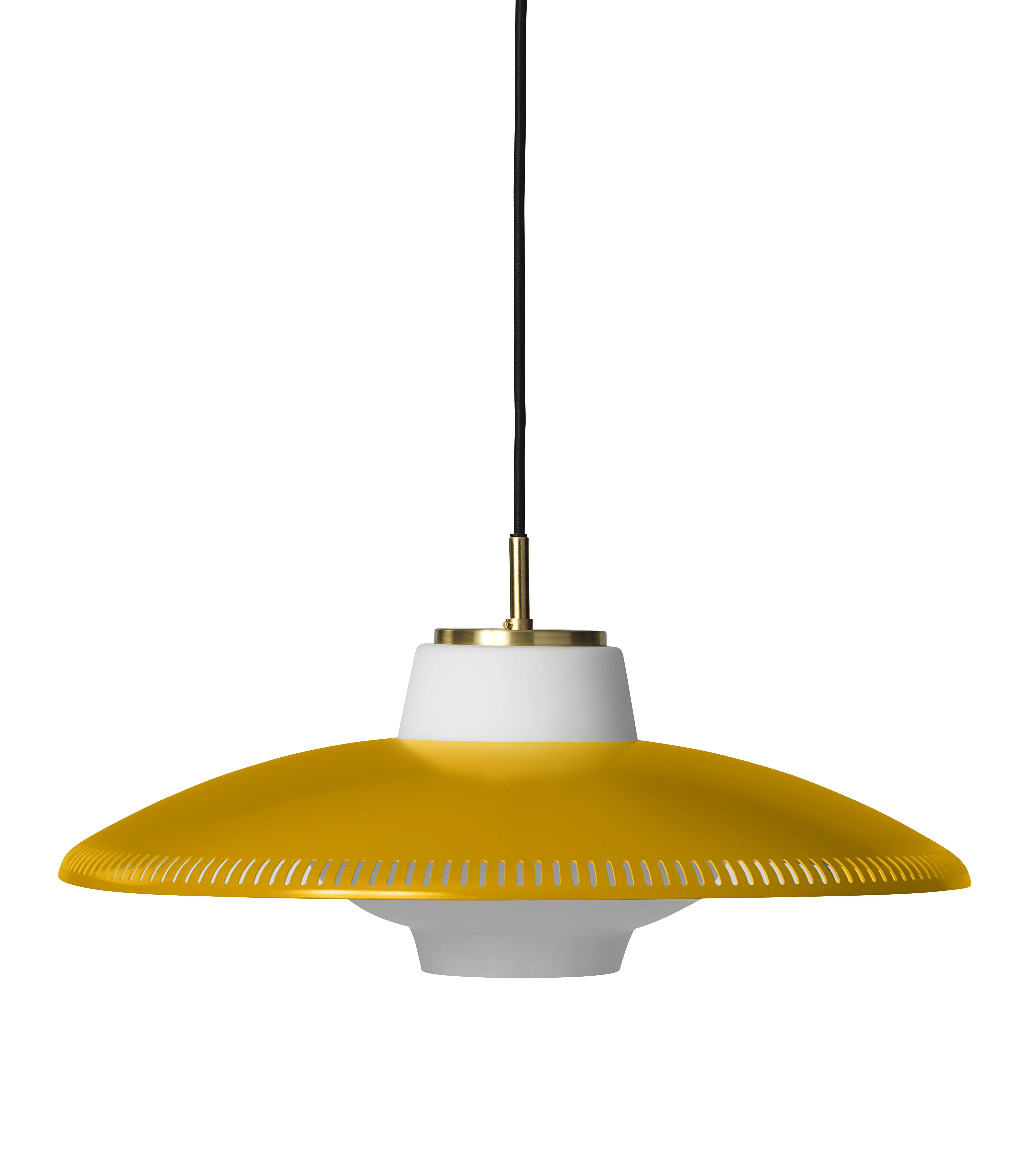
Svend Aage Holm Sørensen, Opal Shade pendant lamp by Warm Nordic
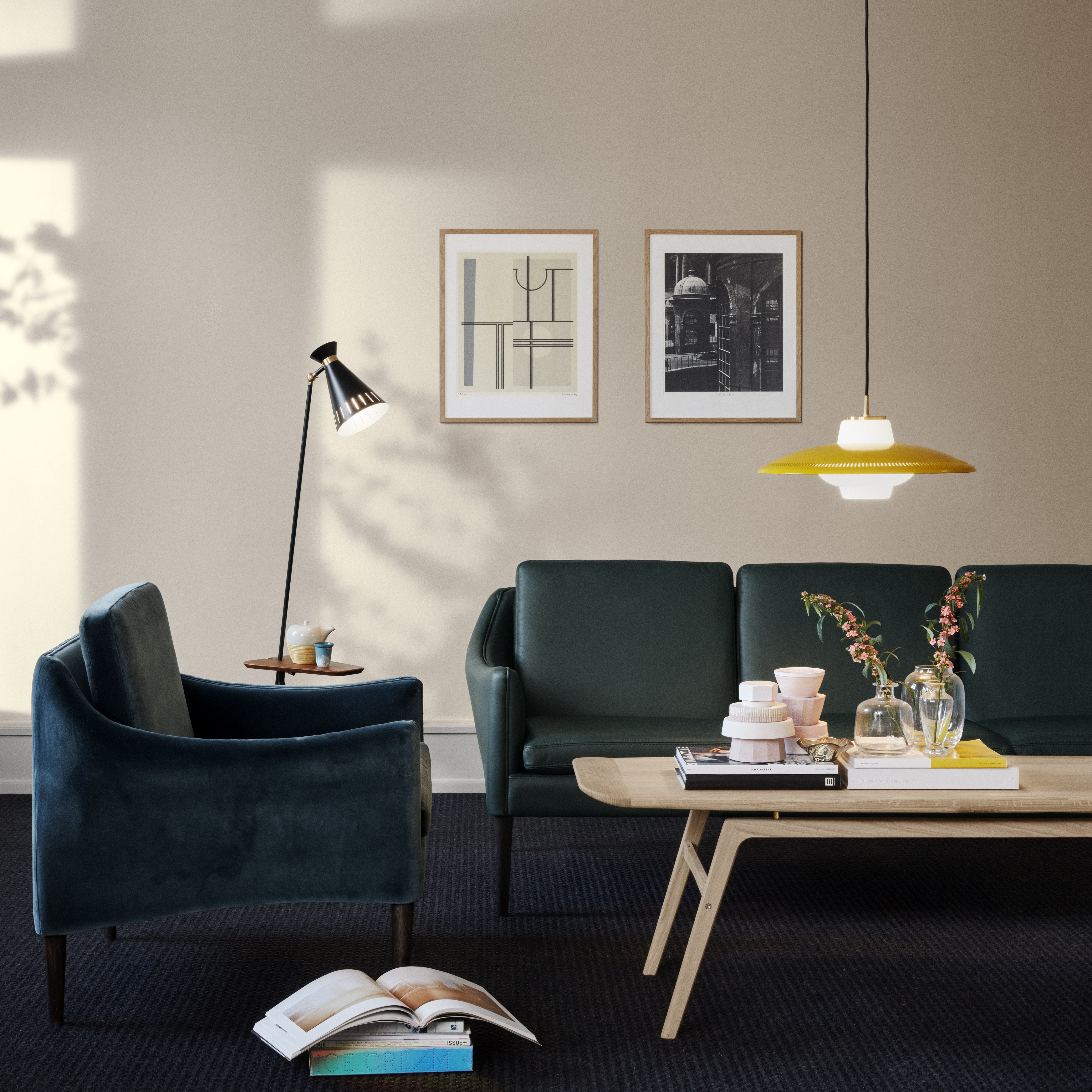
Hans Olsen, Mr. Olsen sofa and Svend Aage Holm Sørensen, Opal Shade pendant lamp by Warm Nordic
Besides Sørensen, Warm Nordic has also secured the rights to reproduce several designs by the great architect and furniture designer Hans Olsen. Named after the designer, the Mr. Olsen Chair demonstrates Olsen’s experimentation with organic forms.
His Orange Lounge Chair, meanwhile, offers a taste of the frequently playful approach of Danish modern design, while also offering an early manifestation of the shell structure which reappeared in later designs such as Arne Jacobsen’s Swan Chair (to which it bears a striking resemblance).
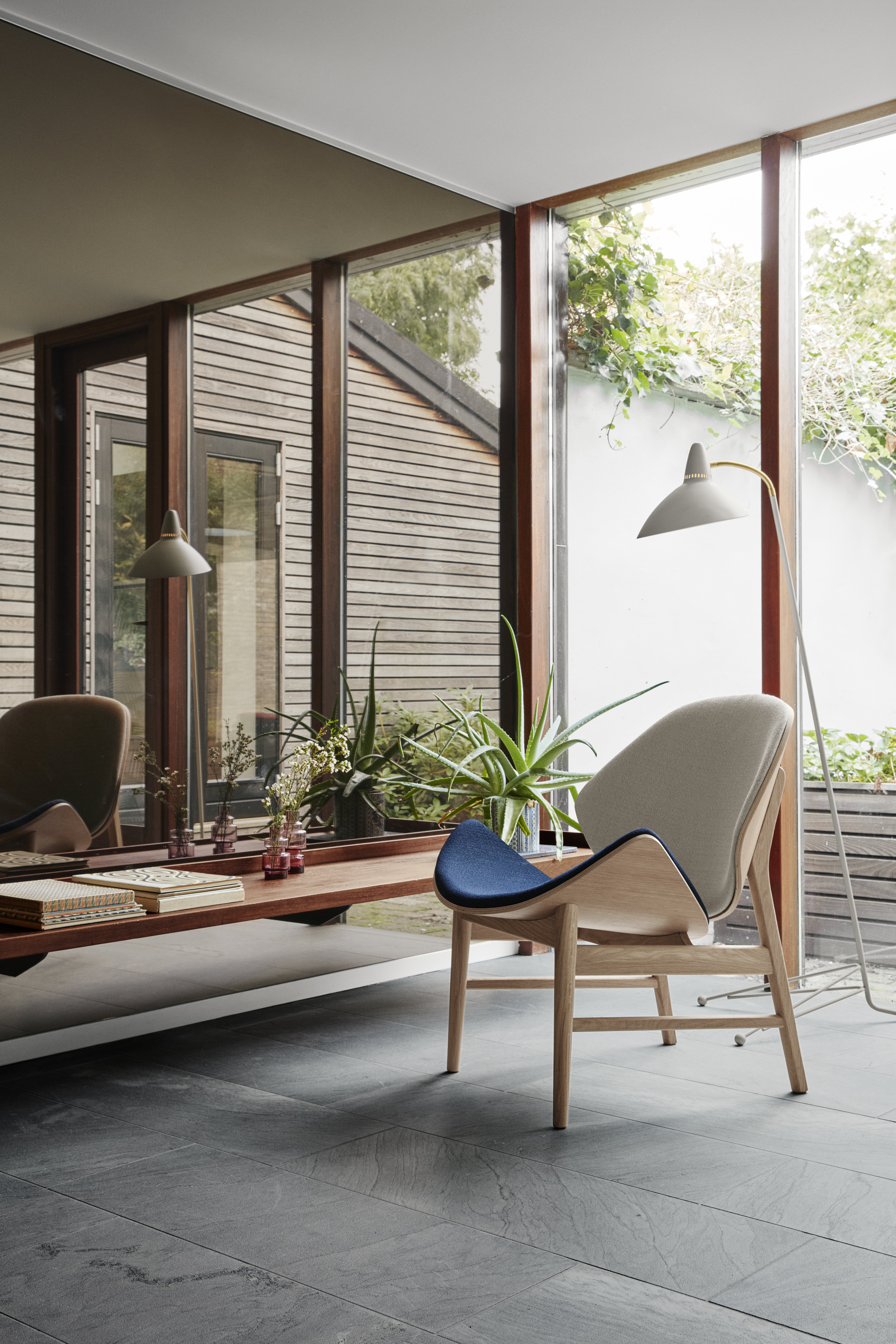
Hans Olsen, – The Orange lounge chair by Warm Nordic
It would be enough if Warm Nordic were only involved in re-editions. Yet the company’s focus on revival is only half the story, since much of what they do is pair these design classics with a host of new designs from contemporary Danish designers. “Together,” Longhi explains “the two collections illuminate the quality of Scandinavian design and its independence from time and generations.”
This important aspect of the company’s mission was also emphasised when we met up with Warm Nordic PR Manager Louise Frogner Krusell at the Stockholm Design Fair. According to Krusell, the company “invited in a lot of new and international designers to tap into that style and to lift it, to make it contemporary… it’s really hard to tell which is new design and which is old design, because it merges and the idea is you want to merge Danish contemporary and classic design.”
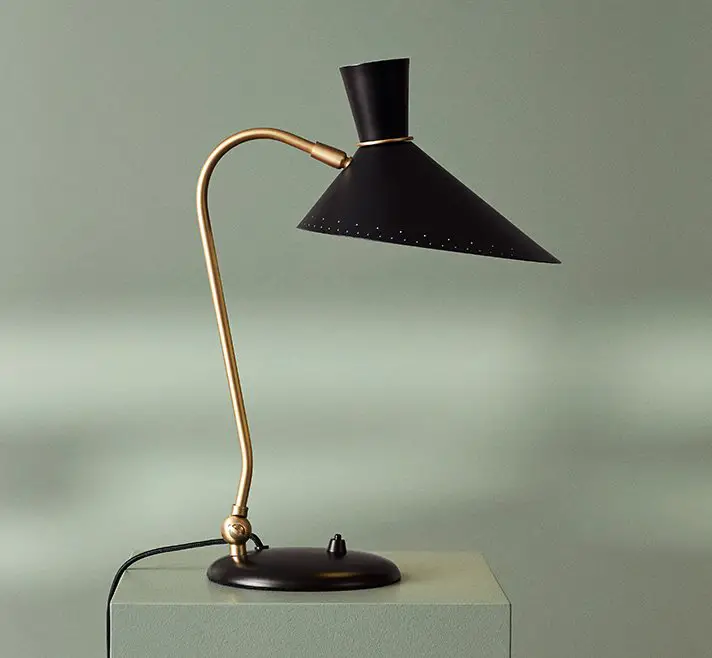
Svend Aage Holm Sørensen, Bloom table lamp by Warm Nordic
This is really important, signalling a forward-thinking focus which was always at the heart of the original Danish modernists’ mission. The keyword that unifies old and new and generally sums up the company’s ethos is in its very name: warm. It comes up a lot when they describe themselves and was a word frequently used by Krusell.
Commenting on the common misconception that Scandinavian design is cold, she emphasised instead that “it’s warm and cozy, and we are happy, we’re colourful.” With such an attitude, we’ll surely continue to see some remarkable output from Warm Nordic.